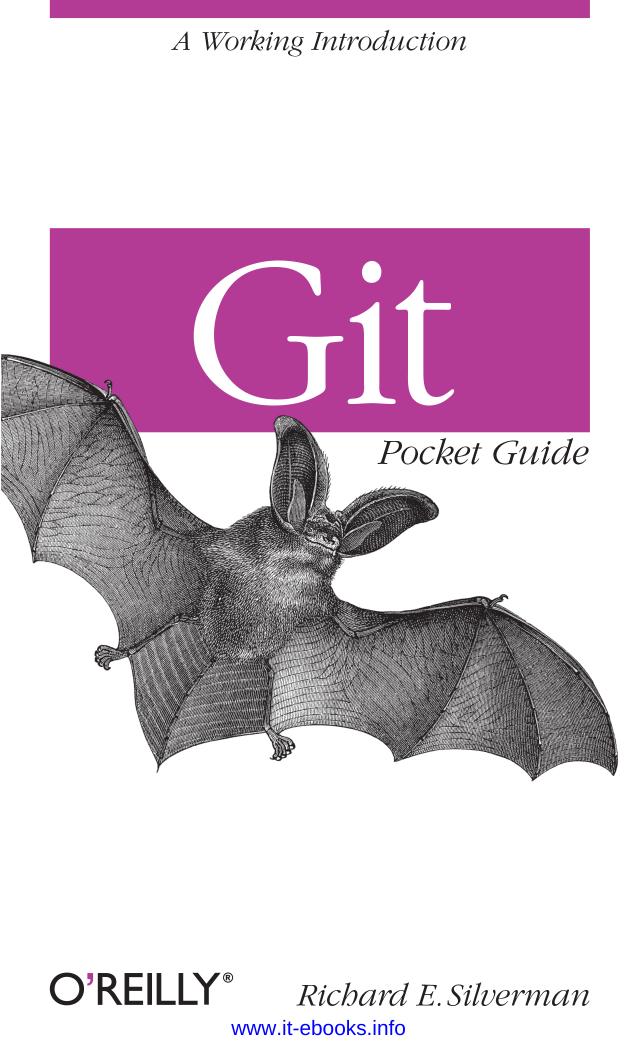Git Pocket Guide by Richard E. Silverman

Author:Richard E. Silverman
Language: eng
Format: epub, pdf
Tags: COMPUTERS / Software Development & Engineering / General
ISBN: 9781449325855
Publisher: O’Reilly Media
Published: 2013-06-24T16:00:00+00:00
Tip
In simple cases, you may get what you think of as the history of “this branch” with git log --first-parent, which just follows the first parent of merge commits rather than all of them. However, this isn’t guaranteed, and in more complex histories it won’t mean much. Since Git allows nonlinear history, a simple list of commits is often not very useful, and you need visualization tools to help you interpret it (see Visual Tools).
Resolving Merge Conflicts
Git doesn’t have built-in tools to interactively address merge conflicts directly; that’s what external merge tools are for, which we’ll consider shortly in Merge Tools. However, here are some tips for use in simple cases.
git log -p --merge shows all commits containing changes relevant to any unmerged files, on either branch, together with their diffs. This can help you identify the changes in the history that led to the conflicts.
If you want to discard all the changes from one side of the merge, use git checkout --{ours,theirs} file to update the working file with the copy from the current or other branch, followed by git add file to stage the change and mark the conflict as resolved.
Having done that, if you would like to apply some of the changes from the opposite side, use git checkout -p branch file. This starts an interactive loop that allows you to selectively apply or edit differing sections (see the “patch” item in the “Interactive Mode” section of git-add(1) for details).
Download
This site does not store any files on its server. We only index and link to content provided by other sites. Please contact the content providers to delete copyright contents if any and email us, we'll remove relevant links or contents immediately.
Test-Driven iOS Development with Swift 4 by Dominik Hauser(10406)
Filmora Efficient Editing by Alexander Zacharias(6712)
The Infinite Retina by Robert Scoble Irena Cronin(6218)
Learn Wireshark - Fundamentals of Wireshark. by Lisa Bock(4483)
Linux Device Driver Development Cookbook by Rodolfo Giometti(4052)
Edit Like a Pro with iMovie by Regit(3918)
Linux Administration Best Practices by Scott Alan Miller(2963)
Linux Command Line and Shell Scripting Techniques by Vedran Dakic & Jasmin Redzepagic(2914)
Mastering PowerShell Scripting - Fourth Edition by Chris Dent(2874)
Creative Projects for Rust Programmers by Carlo Milanesi(2712)
MCSA Windows Server 2016 Study Guide: Exam 70-740 by William Panek(2603)
Docker on Windows by Stoneman Elton(2393)
Kali Linux - An Ethical Hacker's Cookbook: End-to-end penetration testing solutions by Sharma Himanshu(2373)
Hands-On AWS Penetration Testing with Kali Linux by Karl Gilbert(2215)
Hands-On Linux for Architects by Denis Salamanca(2151)
Programming in C (4th Edition) (Developer's Library) by Stephen G. Kochan(2130)
Computers For Seniors For Dummies by Nancy C. Muir(2127)
The Old New Thing by Raymond Chen(2080)
Linux Kernel Debugging by Kaiwan N Billimoria(1838)
